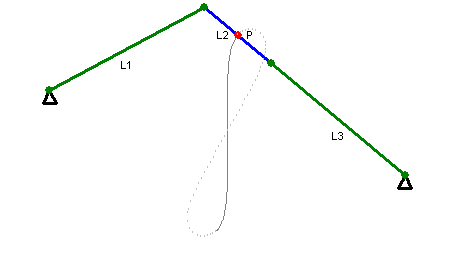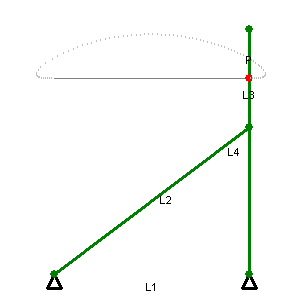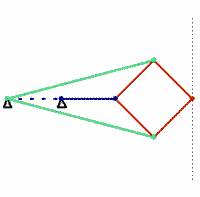“I’m looking for a book on trees.”
I blinked up at the library patron and experienced a moment of mental white-out. Almost, but not quite as bad as, “I’m looking for a book with words in it.” Since she seemed to expect some sort of response, I asked, “Ah… what kind of trees?” and we launched into a mini-game of 20 Questions that ended with me finding “Trees and Shrubs for Dummies” and her walking away beaming happily. Strictly speaking, though, I was breaking the rules.
I’ve been volunteering at the library since May, helping out with shelving books, re-barcoding books, sorting donations, and helping patrons with computer questions. Last week I was officially designed a “Tech Volunteer” and given a seat at the Adult Reference desk, next to the (real) Adult Reference Librarian. My areas of capability are clearly delineated: I am permitted to assist patrons in any way with computer questions and I can guide them in their OPAC computer catalog searches — but only if they are doing an Author or Title search. Subject searches, I was told, are more complicated, and for that I should direct patrons to the actual librarians. So yesterday I sat at the desk, a pile of books before me to bar-code, and every 30 seconds I would look up to see if any of the patrons at the 20 library computers before me were in need of assistance (I am getting very good at visually assessing this). Every five minutes or so, I’d get up and physically wander through the area, since this often elicits questions patrons otherwise don’t feel like getting up to ask. I helped with login questions, printing questions, and even one patron’s request for a “unique identifier” that she could use as a screen name. Given some coaching, she settled on a name — then came back two minutes later for help in picking a “tricky” password. I managed to give her tips on how to do this without her actually telling me what she came up with (whew!). And after each person I helped, I got to increment the tally on our official Reference sheet for the day.
At any rate, I had my station at the Reference desk, complete with a little sign that says “Tech Volunteer on Duty” that I get to put up to advertise my capabilities. But then the OPAC database access went down. It’s still not clear exactly what was wrong (and it’s still broken today). Patrons using the catalog computers could get a list of results by “Browsing” authors or titles, but clicking through to an individual book title yielded “title not found.” Keyword searches returned zero hits. Our library is small, but it does have more than one book with “Lewis” as the author name. So what do you do when the catalog fails? You go to the Reference desk! And from the patron view, I was apparently indistinguishable from a Real Librarian. Both of us were suddenly inundated with patron requests. One good thing was that our two computers, which use a different program to access the catalog, were still working. So I puzzled out how to look up books, check copy status, browse related subjects, etc., through the new interface, to help field the questions we were getting. Nothing like learning on the fly!
And let me tell you, they were right: figuring out what book is wanted by doing Subject searches *does* require some advanced skills, like being familiar with the Library of Congress subject listing (which now comprises six printed volumes!). Nothing is based on words actually in the content of the books, only what predefined subject tags have been associated with them. If you don’t know the tags to use, you can’t find anything. Sitting at that desk was like being on a quiz show.
“Do you have a book on resumes? One with examples so I can just fill in the blanks?”
Mostly this was fun (but somewhat adrenaline-rushy), except for one particular episode. A gentleman approached with, “Where are your cookbooks?” I replied, “I’ll look that up for you.” He said, “What, you don’t know?” I located the section and escorted him to it. “I didn’t bring my glasses,” he said. “Could you find me a slow-cooker book?” I scanned through three sections and triumphantly handed him three such books to select from. He picked one, and then I made my mistake. “Can I help you check that out? I’d be happy to show you how to use the self-check machine.” He grinned and accepted. As we walked across the library, he launched into, “Where did you go to school? How old are you? Are you single? Live by yourself? I have two single sons in their mid-40’s.” I was totally taken aback, trapped between the library customer-service mentality and a cringing horror at what was issuing from his mouth. I showed him the use of the machine and escaped as quickly as I could. How do you tactfully indicate to someone that they are overstepping the bounds of politeness? Maybe library training needs to include advanced social maneuvering as well.
Overall, though, I was able to help several people and, given the OPAC problem, I felt that my presence made a difference. Not bad for diving in! Even if I broke the rules by helping with Subject searches.
Today, I was off the Reference desk hook and instead shelving Juvenile fiction. But I stopped in to say hello to the Reference desk librarian, and then as I was leaving, I heard a patron ask her:
“Do you have a book on history?”
She answered, “What period of history are you interested in?” and I smiled as I walked back to the children’s side of the library.
 Shop Class as Soul Craft, by Matthew Crawford, is a book that my friend Jim recommended long ago. I’m finally getting the chance to take a look for myself. It emphasizes the deep-down satisfaction that we gain from making (or fixing) things ourselves, with our own hands. More generally, it considers the nature of work, and what constitutes a meaningful occupation.
Shop Class as Soul Craft, by Matthew Crawford, is a book that my friend Jim recommended long ago. I’m finally getting the chance to take a look for myself. It emphasizes the deep-down satisfaction that we gain from making (or fixing) things ourselves, with our own hands. More generally, it considers the nature of work, and what constitutes a meaningful occupation.



